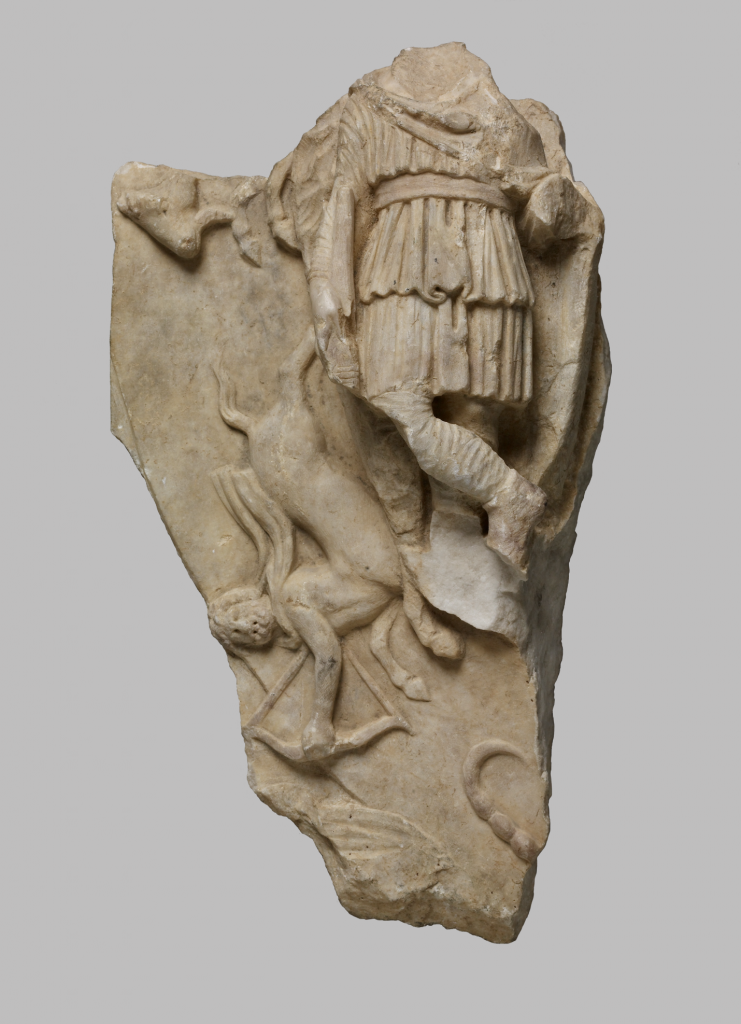
CIMRM Supplement - Dadophore from fragmentary tauroctony. Walters Art Museum, USA.



Pentelic marble. Accession Number 23.238. H: 19 13/16 x W: 11 1/16 x D: 5 5/16 in. (50.4 x 28.1 x 13.5 cm). 1st-2nd century. Acquired by Max Falk, New York; donated to Walters Art Museum, 1984. This is a fragment of a relief that depicted Mithras standing between his two attendants and surrounded by a circular band that included the twelve signs of the zodiac. Partial images of Capricorn, Sagittarius, and Scorpio are preserved here, as well as Mithras's torch-bearing attendant Cautopates. Originally from Rome, Italy. Location: Centre Street: Second Floor: Roman Art.
From Rediscovering color on an ancient relief at the Walters Art Museum:
When this object arrived in the conservation lab, conservators carefully documented the condition in photographs, diagrams, and written reports. While examining the surface closely, conservators noticed faint traces of colorful pigments on the figure of the attendant. Traces of bright blue pigment were identified in the folds of the tunic and leggings. Faint remains of pink or red pigment were seen on the belt and hem of the tunic, as well as in the nostril of the goat Capricorn. And small specks of gold leaf were found on the heel of the figure’s shoe.
Using an imaging technique called visible induced infrared fluorescence photography [discussed in “Cartonnage: Fragments of a Mummy Wrapping Part II”], conservators identified the blue pigment as Egyptian blue, an ancient synthetic pigment used throughout the Roman Empire.
The reddish pigment could not be conclusively identified using non-destructive methods, but it is possible that it is a preparation of madder root, a dye that can be used to create pink or red pigments.
Though only traces of gilding remain, the surfaces of the shoe are stained a purplish color that may be caused by gold oxides, a type of gold corrosion that may form over long periods of time when objects are buried in the ground. Similar staining is present on the torch held by the attendant, which might suggest that it also was originally gilded.
Interestingly, the surfaces with traces of pigments or gilding appear to have been intentionally left rough by the sculptor, perhaps so the paint and gold leaf would better adhere to the surfaces. The neck and hand of the figure are polished very smooth, and have no traces of pigment. This suggests that the smooth white surface of the marble was used to represent the attendant’s skin.
This color reconstruction is speculative, but it gives some indication of how this relief may have appeared when it was first made.
Stop by the Ancient Art galleries on the second floor and take a closer look at the Attendant of Mithras with signs of the zodiac.
comments powered by Disqus
Tweet
Home